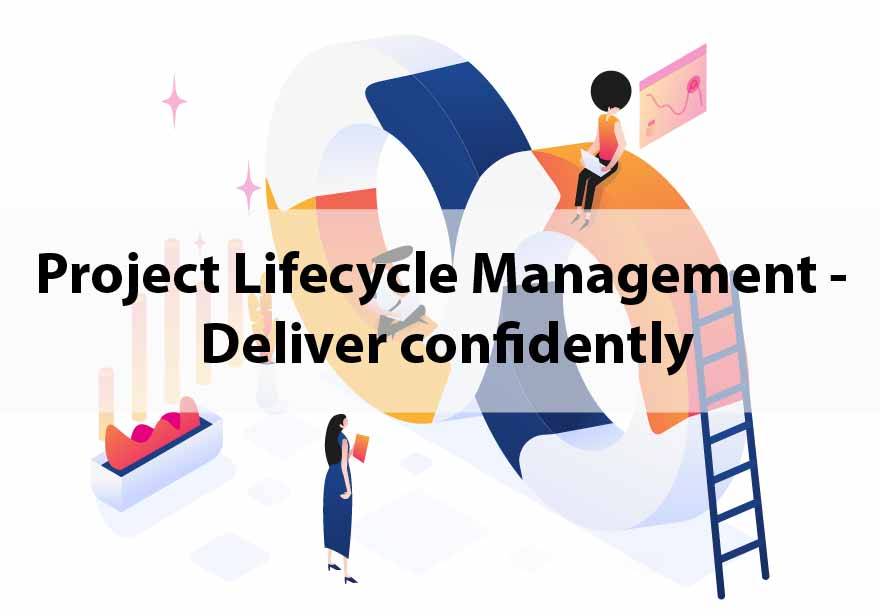Either you want to carry a successful project or deliver it effectively, remember: these are two different things. Satisfying stakeholders isn’t the same thing as delivering your project to satisfied stakeholders, so keep in mind that these are interrelated but separate tasks.
Hitting the Mark
Successful project completion is often measured against three main goals: being on time, on budget and within scope. Unfortunately, it’s a sad but fact in many organizations that management should “pick any two,” since all three is not going to happen.
In fact, it’s so unlikely that one recent study found that project success was statistically improbable for nearly 70% of the more than 100 companies surveyed. Even worse, nearly 50% of their projects were “runaways,” taking more than 180% of target time to deliver, consuming more than 160% of estimated budget, or under-delivering on results by 70%.
Disconnectedness, lack of effective project communication, and flaws in planning and coordination are the primary culprits, wreaking havoc on project delivery. Delays, rework, missing pieces and lack of follow-through can plague any project and soon become the norm. Meanwhile, the cost of these failures and overruns are just the tip of the iceberg: missed opportunity costs are nearly impossible to measure, but may be staggering.
The Delivery Downfall
But instead of dwelling, let’s take a closer look at some of the symptoms of delivery downfall at this critical stage in order to try and prevent them.
- The team is unsure of what “done” really means. Is “done” the first iteration of a new project or task, or is “done” when all revisions, feedback, and edits are incorporated? Maybe “done” is really when the project is finalized and signed off on by management. But who has final say, and how do you know if all pertinent steps have been completed? Clear, reliable finish lines are essential to staying on time, budget, or scope.
- Approval processes are unclear or undefined. Too many cooks in the kitchen can be a problem, but lack of oversight, review, and approval protocol can be just as challenging. Review and approval requests that languish in inbox purgatory or get pushed aside for more urgent needs cause unnecessary delays and force team members to get overly needy with management to track down status.
- Work is thrown over the wall with no follow-up. Team members may blindly pass off work to the receiving team to try clear their own plates, leaving the receiving team scrambling to pick up the next phase of the work with little to no context or support. Non-existent collaboration and a shifting workflow cause quality and performance gaps, slowing down the process at crucial points.
- Team members are unaware of available resources. Not every new project requires you to reinvent the wheel, but that’s what happens if the appropriate resources are unavailable—or no one knows they exist or where to find them. Re-gathering available resources wastes valuable time and self-inflicted mistakes consume up to 80% of the project budget.
Gaining Control of the Chaos
When project delivery devolves in to mayhem, it’s time to rethink your approach to this stage of the work process. Defining success by the classic on time, on budget, within scope trifecta means that these attributes only come into play at the end of the work process. To achieve these critical goals, start at the very beginning. Here’s how:
- Involve stakeholders very early in the process to clearly define expectations, deliverables, strategic goals and a completion timeline. Use templates for work requests and creative briefs to streamline project start-up and ensure that all required data is provided at the very beginning and accessible to other teams.
- Define “done” and “success” early in the planning stage. This way, everyone will be clear as to expectations at every phase of the process, instead of guessing and assuming based on personal priorities and motivations.
- Align these goals with strategic business objectives. Consider customer, client or the receiving team’s expectations and quality and performance standards to ensure that everyone’s on the same page about when, how, and why.
- Build stakeholder approvals into a formal workflow process based on service level agreements. This ensures clear expectations for the level of involvement and response time in advance and minimizes priority readjustment. Use technology to automate review/approval alerts, pre-formatted templates for approval requests, and other processes.
- Establish delivery cadence and team member accountability. Start with a specific task list and master timeline that covers both small steps and major milestones. Keep your team clear on expectations and aware of the team- and company-wide dependencies related to their task performance.
- Use a single, centralized location to store project-related documents and data, to access necessary resources and to communicate within the context of the work to eliminate redundancies, lack of resources and inefficient communication.
The Payoff
Project delivery success requires more than measuring by budget, time and scope to define success based on relevant standards identified at the beginning of the work process. Measure performance against strategic goals, rather than arbitrary constraints, and team members will feel engaged and valuable, in turn boosting morale, work quality, and timely completion.
A more streamlined process that begins with clearly defined expectations will help stakeholders and team members agree on what “done” means, ensuring that everyone has the necessary resources and data for their tasks.
Automate work requests and approval processes to prevent critical tasks from falling through the cracks, and you’ll your budget, time, and scope with less stress and a greater sense of team accomplishment.




